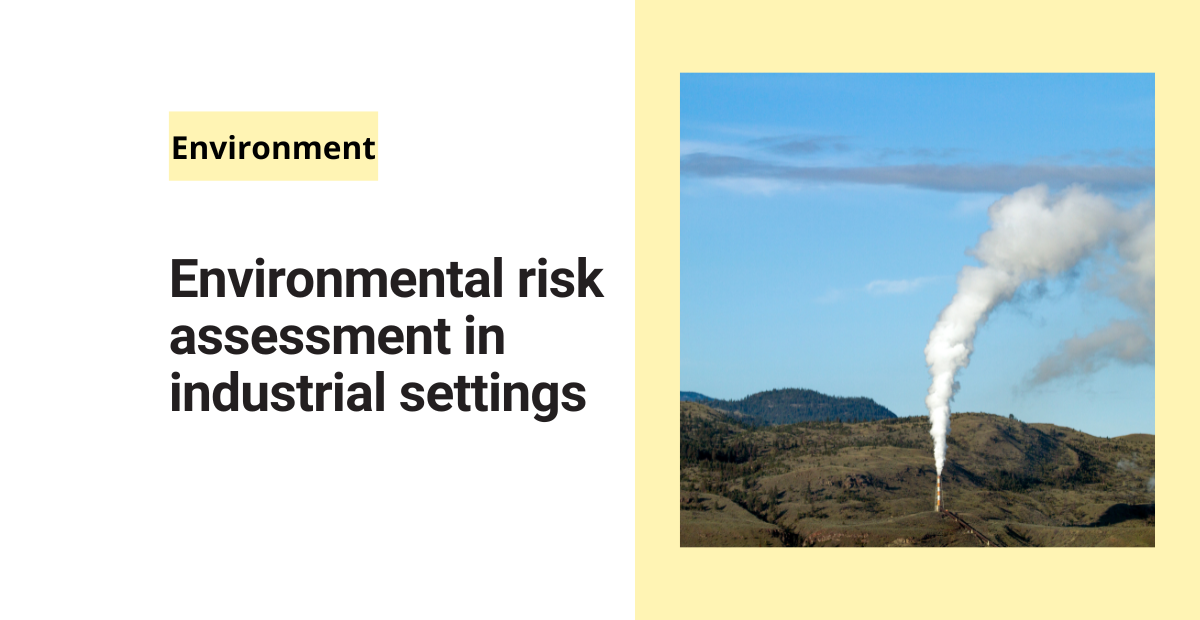I’ve seen firsthand the impact that industrial activities can have on the environment, highlighting the importance of conducting an environmental risk assessment. Not to mention the effect they have on workers and the surrounding communities.
Any company that operates in an industrial setting must perform a routine environmental risk assessment to reduce its footprint. And this practice can also have major benefits in other areas like process improvement and quality assurance.
Definition of environmental risk assessment
Environmental risk assessment is the process of evaluating the potential risks that a particular activity or substance might have on the environment, human health, and other organisms. There are two main goals within this process:
- Identify and quantify potential risks.
- Develop mitigation strategies for each risk.
The risk assessment process typically involves four steps which are listed below
Hazard identification: Identify potential risks.
Exposure assessment: Estimate the extent of exposure.
Dose-response assessment: Determine the relationship between exposure and adverse health effects.
Risk characterization: Synthesize the data to characterize the level of risk associated with the activity or substance.
Let’s take a look at these steps in more detail.
Steps for assessing industrial risks for environmental assessment
Industrial settings are particularly prone to environmental risks due to the nature of the activities involved. Here is an example of how you might follow the four environmental risk assessment steps in an industrial workplace.
STEP 1: Hazard identification
There are many potential hazards within an industrial site, so you’re going to need a methodical approach to finding them all. Start by reviewing material safety data sheets to see which hazardous materials you already know about. Then, conduct site inspections and consult with subject matter experts to locate unknown hazards.
STEP 2: Exposure assessment
The next step is to assess the extent of exposure to those hazards. You can do this by monitoring air and water quality, conducting environmental sampling, and evaluating worker exposure levels.
STEP 3: Dose-response assessment
Before you can get the full scope of the identified environmental risks in your assessment, you have to determine the relationship between exposure and adverse health effects. You’ll need to review toxicological data and epidemiological studies to complete this step.
STEP 4: Risk characterization
To finish the process, categorize each risk according to its potential impact on the environment. This should take into account both the likelihood and magnitude of any incidents.
Assessment and Mitigating industrial environmental risks
Below are some of the strategies you can use to mitigate the environmental risks within an industrial setting.
Engineering controls: Engineering controls involve modifying or redesigning equipment or processes to minimize environmental risks. Examples of engineering controls include:
- Enclosing equipment to prevent emissions
- Using low-emission fuels
- Implementing waste reduction and recycling programs.
Administrative controls: Administrative controls involve changing work practices or policies to minimize environmental risks in your assessment. Examples of administrative controls include:
- Developing standard operating procedures for handling hazardous materials
- Providing training for workers on safe work practices
- Implementing emergency response plans
Personal protective equipment (PPE): PPE involves providing workers with protective clothing, respirators, and other equipment to minimize their exposure to environmental risks. Examples of PPE include:
- Gloves
- Safety glasses
- Respirators
Monitoring and testing: Monitoring and testing involves regularly measuring environmental factors. Examples of factors to test include:
- Soil contamination
- Water quality
- Air quality
Industrial management of change (MOC) compliance
OSHA’s PSM standard requires companies to have a methodical approach for changes to equipment, processes, and procedures–a process known as “management of change.” This is largely due to several large-scale environmental disasters that happened leading into the 1980s.
Our MOC guidelines post explains these requirements and procedures in more detail. What you need to know is that MOC compliance plays a major role in controlling (and eliminating) environmental risks. Your next environmental risk assessment should deep dive into how your team approaches complex changes to ensure sufficient oversight of environmental concerns.
Using MOC software
Because industrial settings can be very complex, many companies turn to MOC software as a tool to help them stay compliant. This software helps businesses implement standard workflows for the approval, coordination, and closure of MOC tasks.
If you’d like to learn more about how Frontline MOC helps companies organize their approach to environmental risk assessment and mitigation, check out this case study from the City of Las Vegas Public Works Environmental Division.




